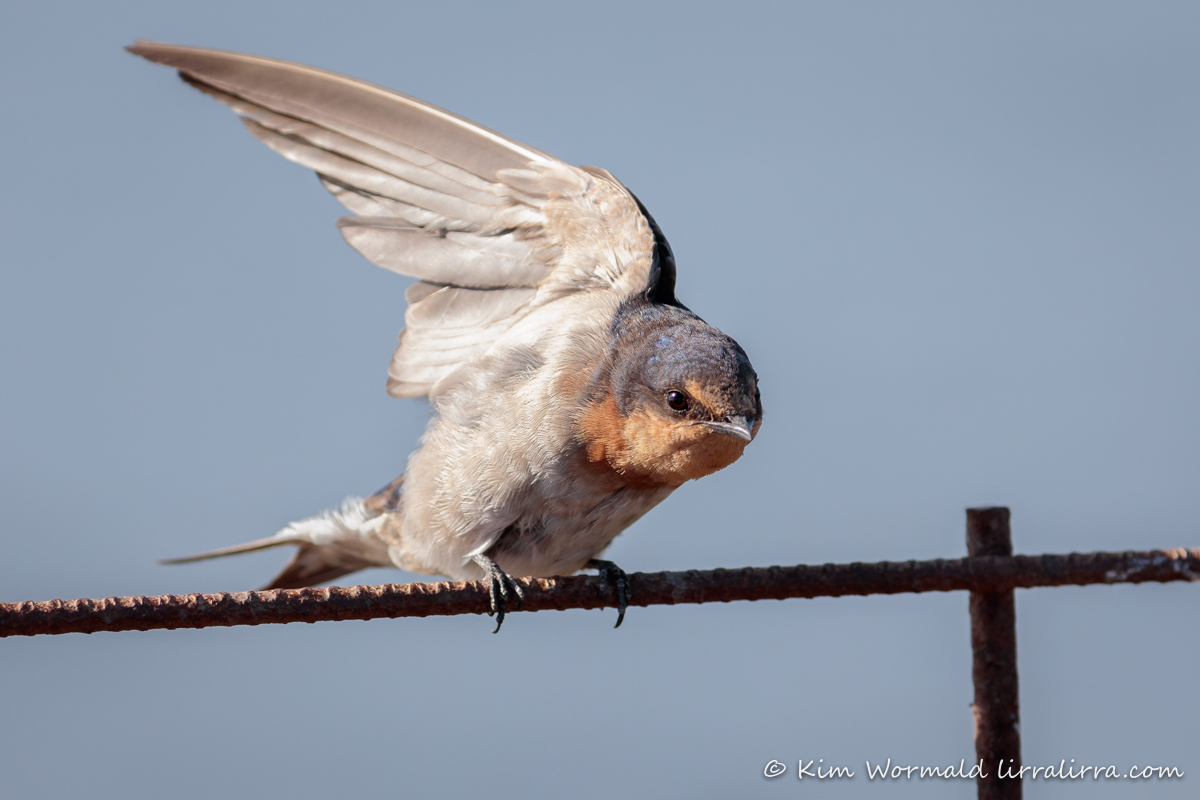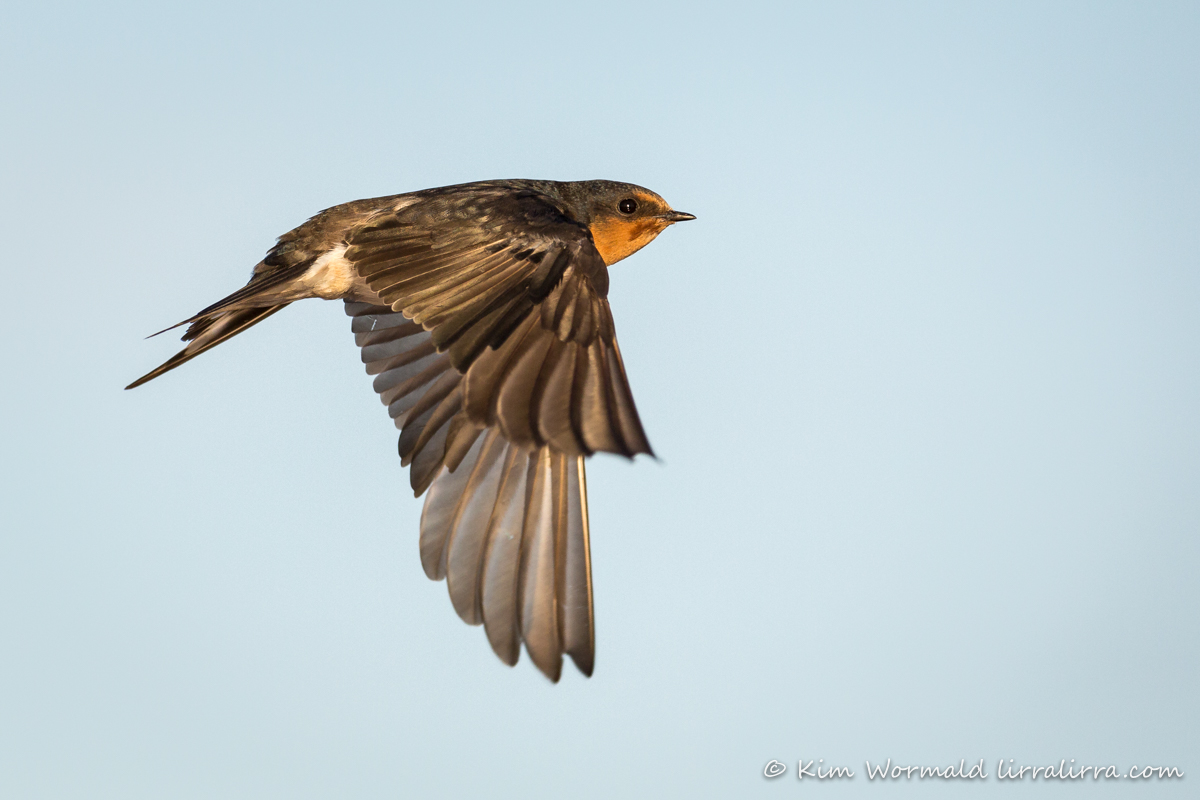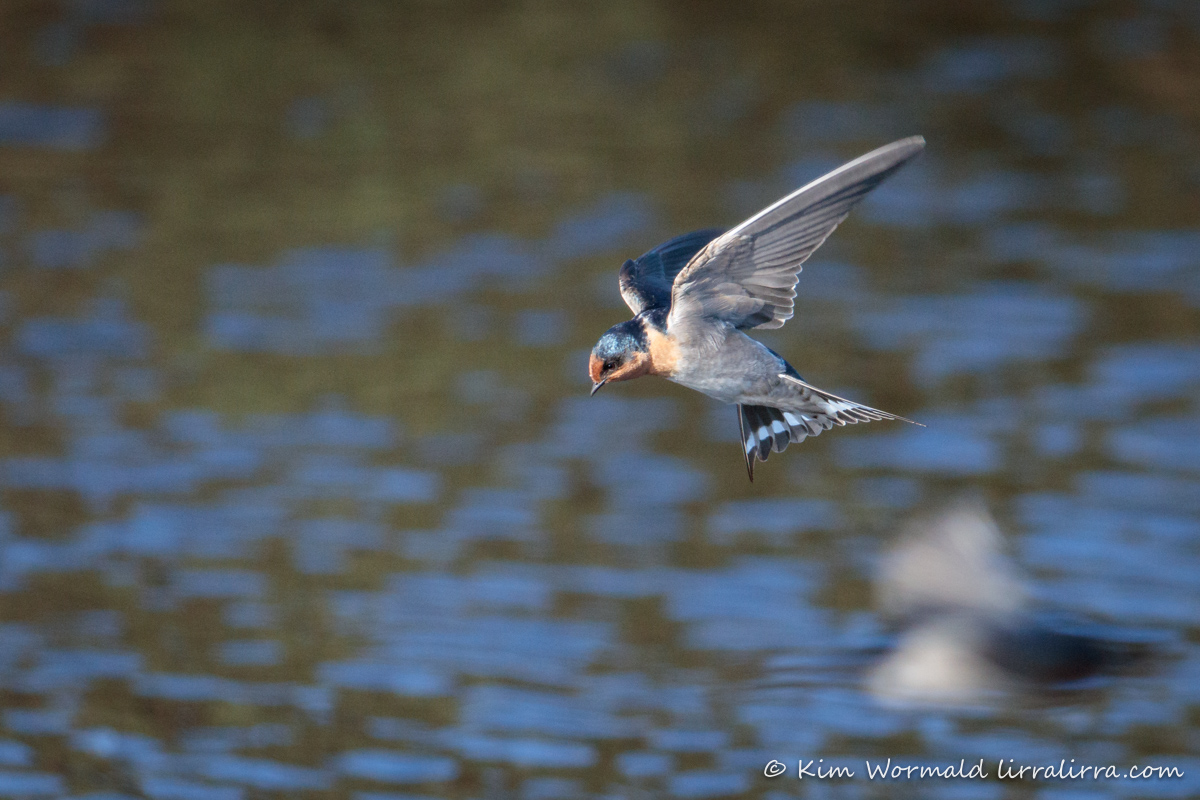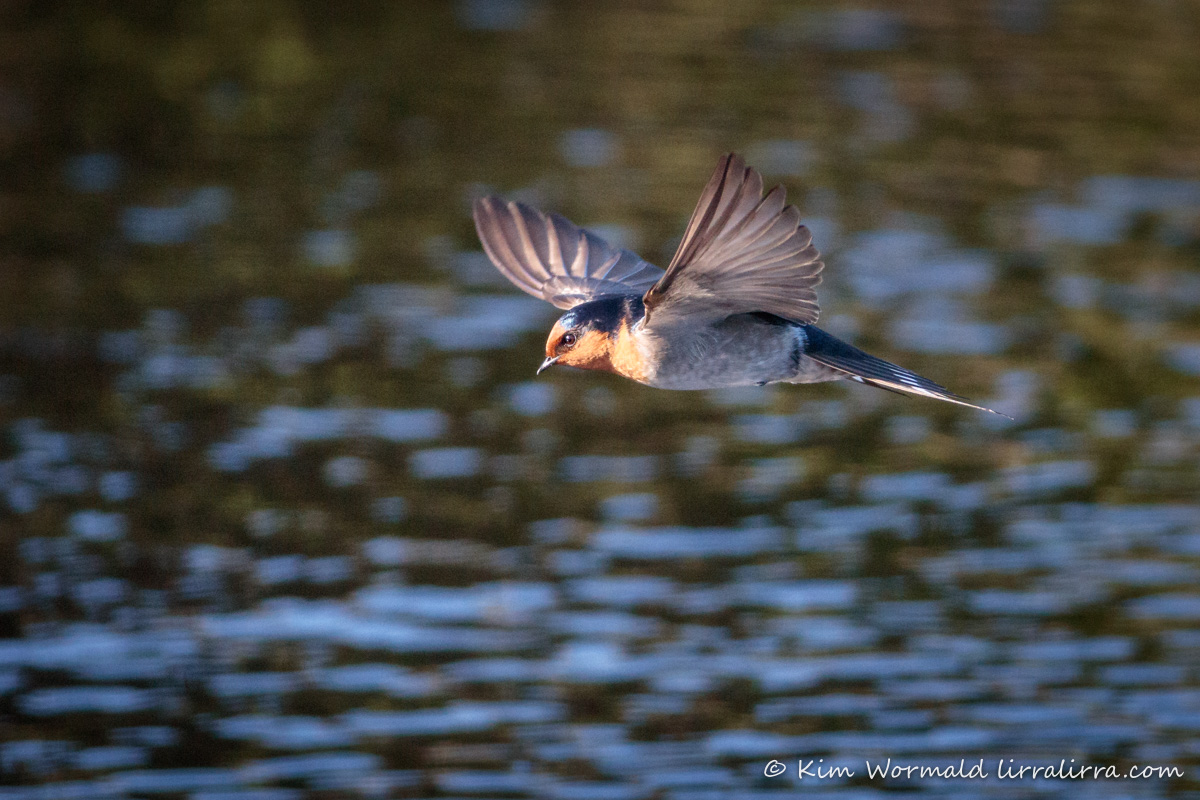Welcome Swallows are fantastic for munching mossies, nesting under verandas and helping to paint my decking with liberal lashings of white-wash.
Welcome Swallow (Hirundo neoxena)
1/1000, f/6.3, ISO 800
.
At 15cm and 15g these agile little flyers are brilliant at darting across the sky catching flying insects. The bird above is a young swallow preparing for take off. Its throat and forehead have not reached the full richness of the adult colouring.
.
Welcome Swallow (Hirundo neoxena)
1/2500, f/7.1, ISO 800
.
How amazing would it be to have the kind of freedom these birds have in flight. I just typed ‘welcome swallow flight speed’ into my browser and up came all kinds of suggestions for shutter speed when taking photographs, which wasn’t what I meant. I’ve tried speeds of between 1/1600th – 1/3200th of a second depending on the light and my preferred ISO limit.
.
Welcome Swallow (Hirundo neoxena)
1/2000, f/5.6, ISO 1600
.
A little more research and I found an article in the New World Encyclopaedia saying that swallows ‘usually forage at around 30-40 kilometres per hour although they are capable of reaching speeds of between 50-60 kmph when travelling’.
The white patches on each tail feather can be seen in the image above.
.
Welcome Swallow (Hirundo neoxena)
1/2000, f/5.6, ISO 1600
.
The pattern of birds’ wings in flight can be so beautiful.
.
Welcome Swallow (Hirundo neoxena)
1/2500, f/8.0, ISO 800
All of these images were taken at the Western Treatment Plant just west of Melbourne. The lighting at different times of day makes a huge difference to the options I have for my camera settings and to the look of the images captured.
We’ve had Welcome Swallows nesting above our doorways for many years. Initially our lovely electrician rushed to tell me about the awful problem I had with swallows starting to build a mud nest on top of a veranda light. He wanted to destroy the nest before the nest damaged the wiring. I remember asking what could be damaged and he listed the lights and sockets through the family room and kitchen end of the house. And I still remember his face when I said that wouldn’t worry me. Luckily their successive broods are yet to damage anything electrical though we do have to be mindful when walking outside with our dinners and double-check for any additional dollops of mayonnaise or sour cream.
Happy birding
Kim
~ thank you for visiting and commenting
~ use the subscribe box to receive a weekly email when lirralirra is updated






Absolutely Beautiful – thanks Kim
Thanks Sue. You’ve made me wonder about getting a high res image of a flying swallow blown up quite large with a lot of sky around it … I might work on that
What lens(s) did you use for these?
I’m in hospital at the moment Richard so can’t check the EXIF data, send me an email if you like and I’ll let you know
Very impressive! Beautiful photos of these stunning little birds.
Thank you Catarina, I got lots of photographs of showing only their wings and tails as well, quite a funny collection all together
You only get ‘whitewash’. The birds here are very partial to mulberries. The consequent stains are pretty much indelible. Some of them also consume concrete (or superglue) judging by the difficulties I have cleaning the veranda.
A small price to pay.
Glorious images Kim. As always, thank you.
Hahaha and oh dear, your veranda sounds as though it gets decorated by a team of abstract artists
I absolutely adore welcome swallows, they are so beautiful! The images of them flying above the water are so glorious!
They are so graceful aren’t they, I get quite mesmerised watching them